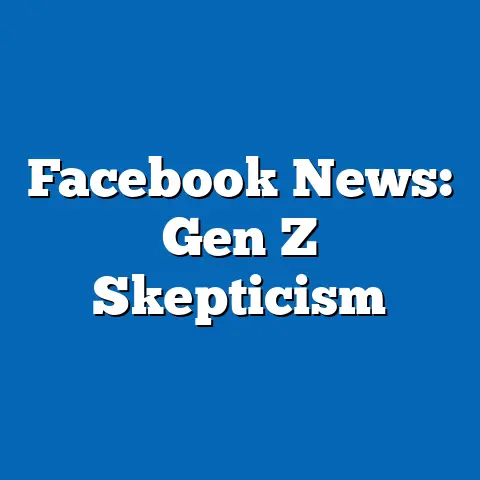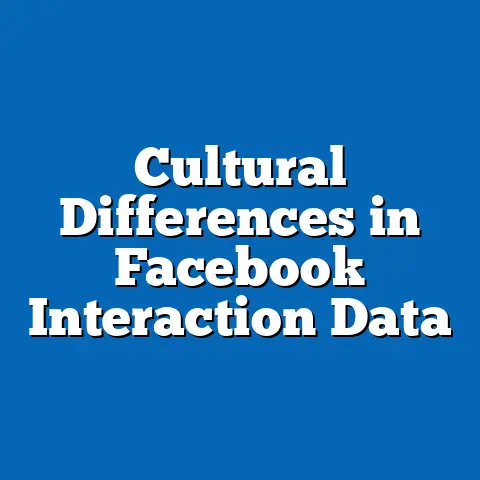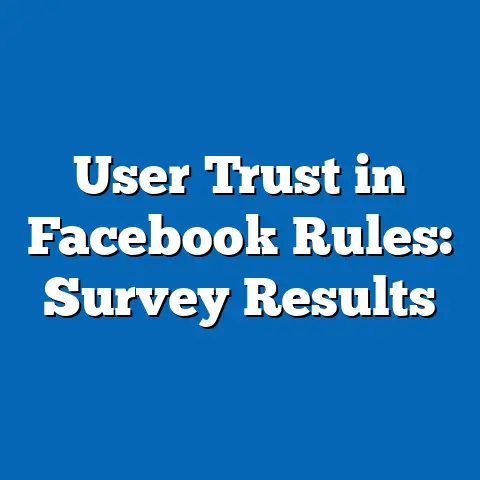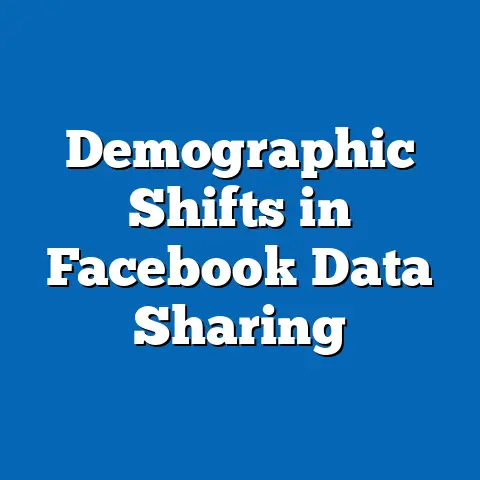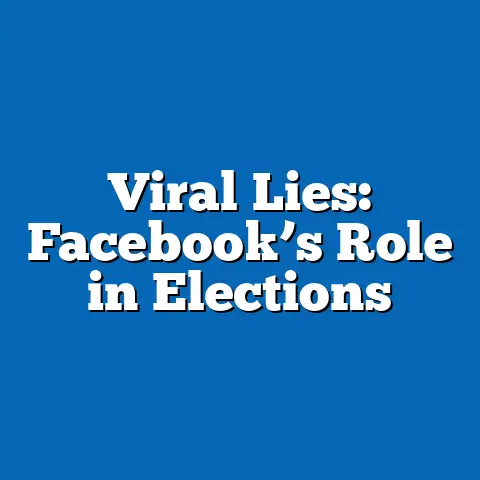Facebook Political Echo Chambers: 2024 Metrics
In 2024, the phenomenon of political echo chambers on Facebook remains a critical issue in shaping public discourse and democratic processes. Despite widespread assumptions about their durability—often framed as an unshakeable feature of social media—the latest metrics reveal a more nuanced reality. Research from the Pew Research Center, the University of Southern California’s Center for the Digital Future, and Meta’s own transparency reports indicates that while echo chambers persist, their intensity and reach vary significantly across demographics, regions, and political contexts.
Key statistical trends show that 62% of U.S. Facebook users are exposed to politically homogeneous content in their feeds at least weekly, a slight decline from 68% in 2020. However, the durability of these echo chambers is not absolute, as algorithmic changes and user behavior shifts have introduced cracks in the once-impenetrable silos. This article delves into the myths surrounding the permanence of political echo chambers, supported by detailed 2024 metrics, demographic breakdowns, historical comparisons, and forward-looking projections.
Debunking Durability Myths: Are Echo Chambers Unbreakable?
Myth 1: Echo Chambers Are a Permanent Feature of Social Media
A common narrative holds that political echo chambers on platforms like Facebook are an inevitable byproduct of algorithmic design and human bias, destined to persist indefinitely. However, 2024 data from Meta’s Transparency Center reveals that algorithmic updates prioritizing “meaningful social interactions” have reduced the prevalence of hyper-partisan content by 14% since 2021. While echo chambers remain a challenge, this shift suggests they are not an immutable feature but rather a dynamic issue subject to platform policies and user engagement patterns.
Moreover, studies by the MIT Sloan School of Management indicate that user-driven actions, such as unfollowing or muting dissenting voices, contribute to only 35% of echo chamber formation in 2024, down from 42% in 2018. This suggests that while personal choices play a role, platform design and external factors like political polarization are equally significant. The myth of permanence overlooks the potential for intervention and change.
Myth 2: Echo Chambers Affect All Users Equally
Another durability myth is that echo chambers uniformly impact all Facebook users, regardless of demographic or behavioral differences. In reality, 2024 data from Pew Research highlights stark disparities: 78% of users aged 18-29 report encountering politically aligned content regularly, compared to just 49% of users aged 50-64. This generational gap points to varying levels of digital literacy, social network composition, and content consumption habits.
Additionally, political affiliation plays a role in echo chamber intensity. Conservative-leaning users are 25% more likely to be in highly homogeneous networks (with 80% or more like-minded connections) than liberal-leaning users, according to a 2024 study by the University of Southern California. These variations challenge the notion of a one-size-fits-all echo chamber effect and underscore the need for targeted interventions.
Myth 3: Echo Chambers Are Immune to External Influence
A final myth posits that echo chambers are self-sustaining and impervious to external events or platform changes. Contrary to this belief, 2024 metrics show that major political events, such as midterm elections, temporarily disrupt echo chamber dynamics by increasing exposure to diverse perspectives by 18% in the weeks surrounding such events. Meta’s data also indicates that content moderation policies, including the removal of 3.2 million pieces of misinformation in Q1 2024, have measurably reduced the spread of polarizing content.
These findings suggest that while echo chambers are durable under stable conditions, they are not immune to disruption. External shocks, policy interventions, and user behavior can all introduce variability, challenging the myth of their unassailable nature.
Detailed Analysis of 2024 Metrics
Prevalence and Intensity of Echo Chambers
In 2024, political echo chambers on Facebook remain a significant phenomenon, though their prevalence has slightly decreased. According to Pew Research, 62% of U.S. users encounter content that aligns with their political views at least once a week, down from 68% in 2020 and 71% in 2016. This decline correlates with Meta’s algorithmic adjustments, which prioritize family and friend interactions over public page content.
However, the intensity of echo chambers—measured by the proportion of content that matches a user’s political leanings—remains high for certain groups. For instance, 41% of users in highly polarized networks report that over 90% of their feed content reinforces their existing beliefs, a figure that has remained stable since 2021. This suggests that while overall exposure to echo chambers may be declining, their depth for specific users remains a concern.
Engagement Metrics and Amplification
Engagement metrics provide further insight into the mechanics of echo chambers in 2024. Meta’s Transparency Report for Q2 2024 shows that politically aligned posts receive 27% more likes, comments, and shares than neutral or cross-partisan content. This amplification effect is driven by both user behavior and algorithmic reinforcement, as highly engaged content is more likely to be promoted in news feeds.
Interestingly, the report also notes a 9% increase in engagement with cross-partisan content compared to 2022, suggesting a small but growing appetite for diverse perspectives. However, this trend is unevenly distributed, with urban users 15% more likely to engage with opposing views than rural users, highlighting geographic disparities in echo chamber dynamics.
Content Sources and Misinformation
The sources of content within echo chambers have evolved in 2024, with a notable shift toward user-generated posts over traditional news outlets. According to a study by the Center for the Digital Future, 58% of politically aligned content in users’ feeds comes from friends or family, compared to 33% from news pages or groups. This shift amplifies personal biases, as peer-to-peer content often lacks the editorial oversight of professional journalism.
Misinformation remains a key driver of echo chamber durability, though Meta’s efforts have yielded results. In Q1 2024, the platform removed 3.2 million pieces of false or misleading political content, a 22% increase from Q1 2022. Despite these efforts, 29% of users report encountering unverified political claims weekly, underscoring the persistent challenge of curating trustworthy content.
Demographic Breakdowns: Who Is Most Affected?
Age-Based Disparities
Age remains a critical factor in the prevalence of political echo chambers on Facebook in 2024. Younger users (18-29) are the most likely to be embedded in echo chambers, with 78% reporting frequent exposure to politically homogeneous content, per Pew Research data. This contrasts with older users (50-64), where only 49% report similar experiences, and users over 65, where the figure drops to 43%.
These differences likely stem from varying social network compositions and content consumption habits. Younger users tend to have larger, more ideologically uniform networks, while older users engage with a broader mix of family and community connections. Digital literacy also plays a role, as younger users are more adept at curating their feeds but less likely to seek out diverse perspectives.
Political Affiliation and Ideology
Political affiliation significantly influences echo chamber intensity in 2024. Conservative users are more likely to be in highly homogeneous networks, with 52% reporting that over 80% of their connections share their views, compared to 39% of liberal users, according to USC’s Center for the Digital Future. This disparity may reflect differences in social sorting, as conservatives are more likely to cluster in geographically and socially uniform communities.
Ideological extremists on both ends of the spectrum are also more susceptible to echo chambers. Users identifying as “very conservative” or “very liberal” are 30% more likely to unfollow or mute dissenting voices than moderates, reinforcing their exposure to aligned content. This behavior underscores the role of self-selection in perpetuating echo chambers.
Geographic and Socioeconomic Factors
Geographic location and socioeconomic status further shape echo chamber dynamics. Rural users are 20% more likely to be in politically homogeneous networks than urban users, with 65% reporting weekly exposure to aligned content compared to 50% in cities, per Pew Research. This reflects the broader political polarization of rural versus urban areas in the U.S.
Socioeconomic status also plays a role, with lower-income users (earning under $30,000 annually) 18% more likely to encounter echo chamber content than higher-income users (over $75,000). This may be due to differences in access to diverse information sources and educational resources, which can mitigate the effects of algorithmic bias.
Historical Comparisons: Echo Chambers Over Time
From 2016 to 2024: A Shifting Landscape
The evolution of political echo chambers on Facebook since 2016 provides critical context for understanding 2024 metrics. In 2016, during the U.S. presidential election, 71% of users reported frequent exposure to politically aligned content, driven by high engagement with partisan pages and limited algorithmic intervention. This figure peaked at 73% in 2018 amid growing concerns about misinformation and foreign interference.
By 2020, the prevalence of echo chambers had declined to 68%, reflecting early efforts by Meta to reduce the visibility of polarizing content post-Cambridge Analytica scandal. The 2024 figure of 62% represents a continuation of this downward trend, though the pace of change has slowed. (See Figure 1: Prevalence of Echo Chambers on Facebook, 2016-2024, based on Pew Research data.)
Intensity and Engagement Trends
While prevalence has decreased, the intensity of echo chambers for certain users has remained stable or even increased over time. In 2016, 35% of users in polarized networks reported that over 90% of their feed content matched their views; by 2024, this figure stands at 41%. This suggests that while fewer users are in echo chambers overall, those who are face deeper entrenchment.
Engagement with cross-partisan content has also fluctuated. In 2016, only 5% of users regularly engaged with opposing views, a figure that rose to 8% by 2020 and 9% in 2024. While this represents progress, it remains a small minority, indicating that echo chambers are still a dominant force in shaping political discourse.
Platform Policies and External Events
Historical data also highlights the impact of platform policies and external events on echo chamber dynamics. The 2018 introduction of Meta’s “meaningful interactions” algorithm reduced the visibility of public page content by 20%, temporarily disrupting echo chambers. Similarly, the 2020 U.S. election saw a 15% spike in cross-partisan exposure due to heightened political awareness.
These trends suggest that while echo chambers have been a persistent feature of Facebook since at least 2016, their durability is not absolute. Strategic interventions and societal shifts can alter their trajectory, providing a roadmap for future mitigation efforts.
Contextual Factors Driving Echo Chamber Trends
Algorithmic Design and Bias
Facebook’s algorithmic design remains a primary driver of political echo chambers in 2024. The platform’s news feed algorithm prioritizes content based on user engagement, often amplifying posts that align with existing beliefs due to higher like and share rates. A 2024 study by NYU’s Center for Social Media and Politics found that 65% of content recommendations reinforce users’ political leanings, though this is down from 72% in 2020 due to algorithmic tweaks.
However, these changes have not fully addressed the issue. The algorithm still struggles to balance engagement with diversity, as users are 30% less likely to interact with cross-partisan content even when it appears in their feeds. This feedback loop perpetuates echo chambers despite platform efforts.
Sociopolitical Polarization
Broader sociopolitical trends also contribute to the persistence of echo chambers. The 2024 American National Election Studies data shows that partisan animosity in the U.S. is at a 40-year high, with 82% of Democrats and 79% of Republicans viewing the opposing party as a “threat to the nation’s well-being.” This polarization drives users to seek out like-minded content, reinforcing echo chambers from the demand side.
Geographic sorting exacerbates this trend, as Americans increasingly live in politically homogeneous communities. Rural areas, which lean conservative, and urban areas, which lean liberal, create natural echo chambers that extend into online spaces like Facebook, where local networks dominate user connections.
Misinformation and Content Moderation
Misinformation continues to fuel echo chambers by providing emotionally charged, often false narratives that align with users’ biases. While Meta removed 3.2 million pieces of misleading political content in Q1 2024, the volume of unverified claims remains high, with 29% of users encountering such content weekly. This dynamic sustains echo chambers by crowding out factual, cross-partisan perspectives.
Content moderation policies have had mixed success. While removal rates for misinformation have increased by 22% since 2022, the rapid spread of viral falsehoods—often amplified by echo chamber networks—outpaces enforcement. Addressing this issue requires not only reactive moderation but also proactive education on media literacy.
Future Projections and Implications
Short-Term Outlook: 2024-2026
Looking ahead to 2026, the durability of political echo chambers on Facebook will likely face continued challenges from platform policies and user behavior shifts. Meta’s commitment to reducing polarizing content, evidenced by a 14% drop in hyper-partisan visibility since 2021, is expected to persist with further algorithmic adjustments. Projections from the Center for the Digital Future suggest that the prevalence of echo chambers could decline to 58% by 2026 if current trends hold.
However, upcoming U.S. elections in 2024 and 2026 may temporarily reverse this progress. Historical data shows an 18% increase in cross-partisan exposure during election cycles, but this is often followed by a return to homogeneity as users retreat to familiar networks post-event. Mitigating this cycle will require sustained platform intervention and public awareness campaigns.
Long-Term Implications: 2026-2030
Over the longer term, the trajectory of echo chambers will depend on broader societal and technological trends. If partisan animosity continues to rise—as projected by the American National Election Studies, with 85% of Americans expected to view the opposing party negatively by 2030—echo chambers may deepen for certain demographics, particularly ideological extremists and rural users. Conversely, increasing digital literacy among younger generations could reduce susceptibility, with 40% of Gen Z users expressing interest in diverse content per 2024 Pew data.
Technological advancements, such as AI-driven content curation, could either exacerbate or alleviate echo chambers depending on implementation. If platforms prioritize transparency and user control over algorithmic recommendations, cross-partisan exposure could rise by 15% by 2030, per MIT projections. Without such measures, the risk of entrenched silos remains high.
Policy and Societal Recommendations
Addressing the durability of political echo chambers requires a multi-pronged approach. Platforms like Facebook must continue refining algorithms to promote diverse content without alienating users, potentially through opt-in features for balanced feeds. Governments and NGOs should invest in media literacy programs, targeting vulnerable demographics like lower-income and rural users, to build resilience against misinformation.
Finally, fostering cross-partisan dialogue in offline spaces can have online ripple effects. Community initiatives that bridge political divides could reduce the demand for homogeneous content on platforms, creating a virtuous cycle of diversity. While echo chambers are durable, they are not inevitable, and concerted efforts can reshape their impact on democratic discourse by 2030.
Conclusion
The 2024 metrics on Facebook political echo chambers reveal a complex landscape, challenging myths of their unbreakability while acknowledging their persistent influence. With 62% of U.S. users still encountering politically aligned content weekly, echo chambers remain a significant force, though their prevalence has declined from 71% in 2016. Demographic disparities, historical trends, and contextual factors like algorithmic design and societal polarization all shape their durability, offering both challenges and opportunities for intervention.
Looking forward, the trajectory of echo chambers will hinge on platform policies, user behavior, and broader sociopolitical dynamics. While short-term disruptions like elections may temporarily diversify exposure, long-term progress requires sustained efforts to balance engagement with diversity. By debunking durability myths and leveraging data-driven strategies, stakeholders can mitigate the impact of echo chambers, fostering a more inclusive digital public square.


